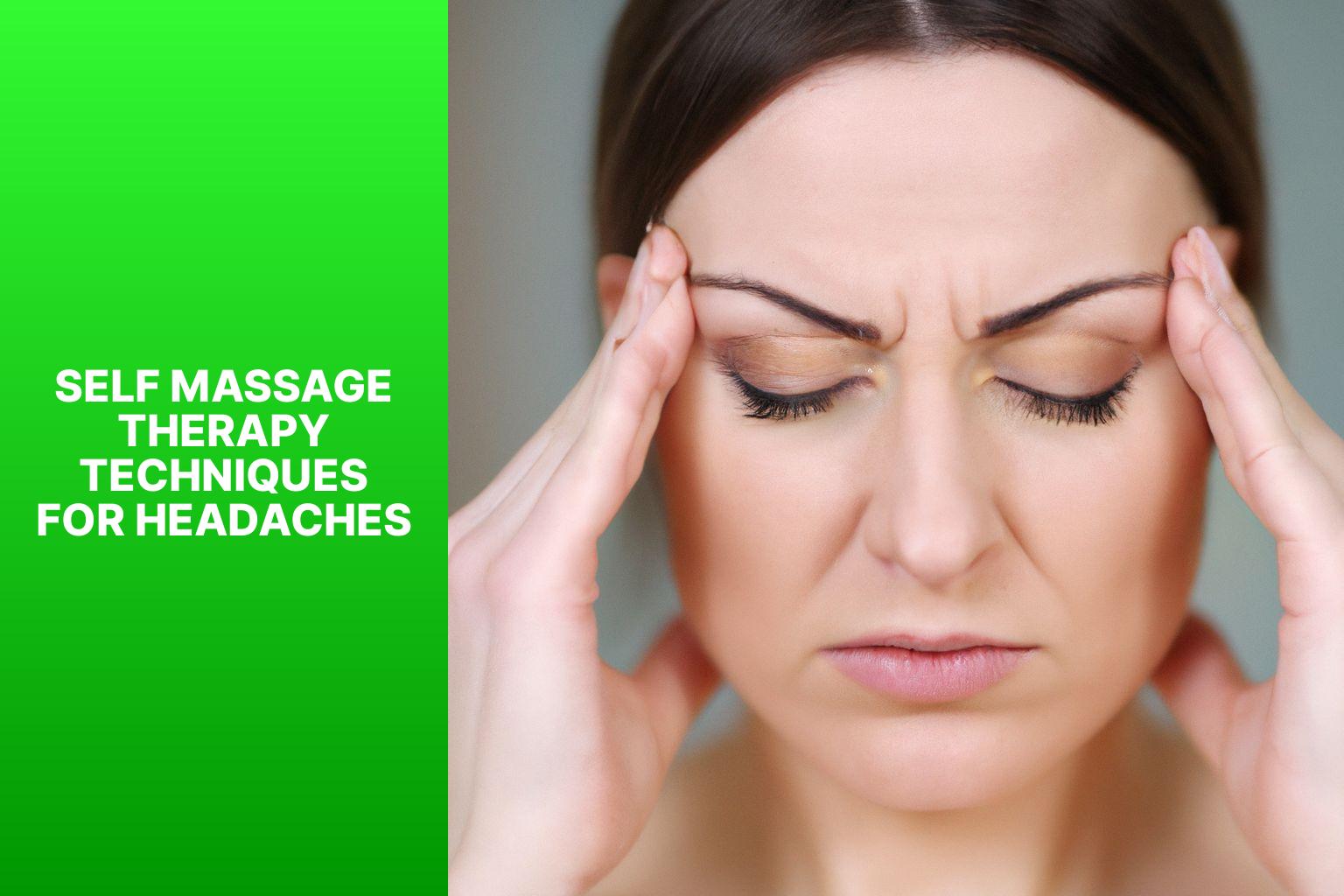Self-massage therapy refers to a range of techniques that apply pressure and manipulate muscles and tissues to provide pain relief. This hands-on approach can effectively alleviate headache symptoms without requiring a professional masseuse. By implementing self-massage therapy techniques for headaches into a self-care routine, individuals can take control of managing their discomfort.
Headaches represent one of the most common medical complaints, affecting people of all ages worldwide. Ranging from mildly annoying to debilitating, headaches detrimentally impact work productivity, quality of life, and overall health. Pharmaceuticals offer temporary relief but often carry side effects and fail to address the root causes behind what sparks most headache pain. Instead of popping pills, self-massage therapy techniques serve as an accessible way to gently manage headaches holistically.
Implementing even brief regular self-massage therapy tailored to specific headache pain patterns empowers individuals to better control and prevent headaches. Self-massage reduces reliance on medications while addressing underlying muscular and neurological causes. Integrated into a comprehensive self-care plan, self-massage enables sustainable pain relief two hands at a time.
This guide explores common headache categories, how and why self-massage alleviates headaches, and step-by-step self-massage techniques for effective drug-free headache management. Master these skills to harness your own healing potential to resolve headaches holistically.

Understanding Common Headache Triggers
In order to effectively manage headaches, it is helpful to identify potential triggers that may be causing or contributing to the pain. Some common headache triggers include:
Stress and Anxiety
Increased stress often correlates directly with increased headache frequency and intensity. Both emotional and physical stress can trigger changes in brain chemistry and tense muscles which lead to headaches. Managing stress through relaxation techniques, massage, light exercise, or speaking with a therapist can lessen incidence of stress-related headaches.
Poor Posture
Slumping forward or having the neck tilted forward can strain muscles, restrict blood flow to the head, and contribute to headaches. Improving posture involves correcting positioning of the head, shoulders, and back through targeted stretches and body awareness exercises. Self-massage techniques also alleviate muscle tension caused by poor posture.
Eye Strain
Headaches are often triggered by prolonged focus on nearby objects which tense muscles around the eyes. Practicing good visual hygiene such as taking regular screen breaks, proper lighting, ergonomic workstations, and eye exercises help minimize eye fatigue. Targeted facial and temple massage also provides relief.
Dietary Triggers
Certain foods and drinks contain compounds or influence hormone levels in ways that can ignite headaches. Common dietary triggers include alcohol, chocolate, cheese, processed meats, MSG, caffeine withdrawal, and skipping meals. Identifying individual headache food triggers through an elimination diet and food journal can inform beneficial dietary changes.
Hormonal Changes
Fluctuating estrogen levels during the menstrual cycle commonly trigger headaches in women. Hormone changes during perimenopause and menopause may also contribute to headaches. While the root hormonal causes can’t be altered, managing symptoms through massage, stress-reduction, trigger avoidance, and consistency in sleep, meals, and exercise can provide stability.
Dehydration and Hunger
Failing to drink adequate water or going long periods without eating causes headaches in some people. Drink water throughout the day and avoid exceeding 3-4 hours without food. Light snacks between meals may help. Targeted massage boosts circulation to relieve hydration and hunger-based headaches.
Weather Changes
Shifts or extremes in weather patterns trigger headaches in sensitive people due to pressure changes. Applying warm towels and cold compresses provide relief in addition to protective measures like humidity control, properlayering, and avoiding direct sun exposure during very hot days.
Sleep Disturbances
Missing sleep, inconsistent sleep routines, and poor sleep hygiene commonly cause next-day headaches. Prioritizing sufficient high-quality nightly sleep, limiting blue light exposure before bedtime, and keeping a consistent bedtime enables proper rest. Relaxation techniques and targeted self-massage also offset tension caused by poor sleep.

How Self-Massage Therapy Helps Relieve Headaches
You may wonder exactly how does massage help headaches? Here are some of the ways self-massage alleviates headaches:
Promotes Total Body Relaxation
Gentle massage techniques activate the parasympathetic nervous system, prompting the relaxation response which releases muscular tension and enables the body to enter a renewed state of calm. This systemic relaxation facilitates the release of endorphins—the body’s natural pain killers—which alleviate feelings of pain and discomfort. Whole body relaxation also aids in releasing accumulated stress and muscle tension, common triggers which can ignite or exacerbate headaches.
Targets Trigger Points
Self-massage identifies and applies direct, sustained pressure to knotted trigger points in the muscles. Trigger points are irritated knots that refer pain to other areas of the body, including headaches related to tense muscles in the neck and shoulders. Firm compression forces blood flow into the knot, breaking up adhesions and eliminating the trigger point. Releasing troublesome trigger points reduces referred headaches.
Boosts Local Circulation
Massage strokes mechanically push blood through congested areas. Increased circulation delivers fresh oxygenated blood and nutrients to tense muscles and takes away pain-causing waste. Improved blood flow and vascular function effectively alleviate certain types of headaches, including those triggered by tight neck muscles or poor circulation. Enhance circulation through effleurage, compression and kneading massage techniques.
Resets Nervous System
Headaches often stem from irritation to cranial or cervical nerves caused by inflammation, muscle tension, or previous injury. Massage therapy alleviates nerve aggravation by reducing local inflammation and muscular pressure on surrounding nerves. Furthermore, firm massage input sends signals to the brain prompting deactivation of over-firing pain neurons—resulting in widespread relief.
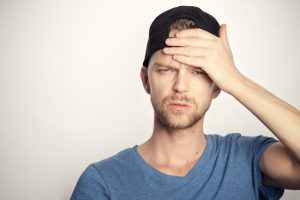
Most Effective Self-Massage Techniques for Headaches
A variety of self-massage techniques can provide natural drug-free headache relief. Experiment with different modalities to discover which methods work best for your specific type of headaches:
Slow Circular Scalp Massage
Use gentle circular fingertip motions to massage the scalp. This stimulates circulation around sensitive nerves and tissues alleviating tension. Apply light pressure while making small circles for several minutes. Focus extra attention on any exceptionally tender areas. Coordinate deep breathing as you slowly work across entire scalp.
Pro tip: For added relaxation during scalp massage, use a few drops of peppermint or lavender oil on fingertips.
Facial and Temple Massage
Use both light and deep circular motions with pads of fingers to massage temples, cheeks, jaw, and upper neck opening up tense areas. Relief facial pressure and blockage decreasing referred pain. Work slowly using miniature circular strokes around temples. Rub firmly along the temporomandibular joint and down sides of neck hitting specific acupressure points.
Pro tip: Apply gentle outward sideways pressure behind ears to mobilize stiff jaw.
Trigger Point Neck Massage
Use fingers and thumbs to apply prolonged pressure on trigger points knots on either side of cervical spine, working from base of skull to shoulders. Assess pain scale before and after trigger point release. Follow compression with light soothing effleurage strokes to periphery circulation for complete trigger point therapy.
Pro tip: For added relaxation during scalp massage, use a few drops of peppermint or lavender oil on fingertips.
Shoulder and Upper Back Massage
Vigorously knead tight muscles around shoulders, upper back, and base of neck using fingers, knuckles, fists, palms, and elbows as able based on positioning. Target knots for specified intervals interspersed with wide gentle strokes across entirety of upper back to improve posture and provide relaxation. Open up chest by stroking outward diagonally from sternum.
Pro tip: Use massage tools like therapy cane, back knobber, or foam roller for hard to reach spots.
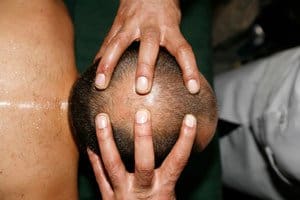
Integrating Self-Massage into Holistic Headache Relief Lifestyle
Incorporate self-massage therapy techniques into a comprehensive holistic headache management regimen including:
Establish Preventative Self-Care Routines
Consistency is vital in thwarting headaches before they start. Make time for short semi-daily self-massage sessions even if not currently experiencing headache pain as preventative measure. Frequently flushing tissues improves circulation, reduces trigger points, and manages pain neurologically over entire nervous system.
Employ Multimodal Headache Relief Methods
When painful headaches do occur have a plan to address quickly. Use ice packs for inflammation or heating pads for muscle relaxation during acute attacks in tandem with massage. Essential oils, sound therapy, hydration, and stretching provide additional relief outlets. Keep a headache relief toolkit prepared.
Adjust Lifestyle Factors and Avoid Triggers
Improving posture, managing stress, adequate sleep, regular meals, and trigger avoidance comprise foundational headache prevention measures. Evaluate lifestyle for modifications to support overall health and wellness through journaling, health coaching, or speaking to a healthcare provider.
Seek Medical Guidance When Necessary
While extremely effective, self massage represents only one facet of integrative headache relief. Consult doctor if headaches worsen or don’t improve with conservative efforts. Health providers assess symptoms, order diagnostic testing, and prescribe medications or therapy referrals to determine root causes and customize complementary treatment plans.
Consistency is key in utilizing self-massage to better control headaches holistically. Even taking just 5 minutes a day, individuals can incorporate these customizable drug-free techniques into a preventative self care routine to thwart headache pain proactively. Reduce misery through your own two hands.
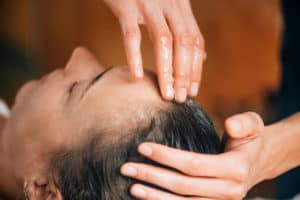
Consistency is Key with Self-Massage for Headaches
In summary, self-massage therapy techniques for headaches serve as customizable, holistic headache relief without the need for medications or doctor visits. Leveraging knowledge of pressure points, trigger point release techniques, muscular and vascular physiology and neurological pain pathways, self-massage empowers headache mitigation through your own two hands.
By taking just minutes a day to apply firm pressure, sustained compression, and rub out tension, individuals can incorporative therapeutic self-massage into a regular preventative self-care routine. Consistency works best to thwart headaches before they start. When painful headaches occur, use self-massage as part of multimodal rapid relief strategy. Adjust lifestyle factors and seek doctor guidance for severe headaches.
While no substitute for medical care, self-massage represents first line headache treatment. These techniques calm the nervous system, relax muscles, boost circulation, release trigger points and alter pain signaling for whole body relief. Integrate self-massage alongside strengthening, stretching, posture correction, stress-reduction techniques and trigger avoidance for comprehensive headache management plan.
Give self-massage consistency to control headaches so you can get back to fully engaging in work and leisure headache-free. Let your own hands massage misery away as part of drug-free, holistic headache relief lifestyle.
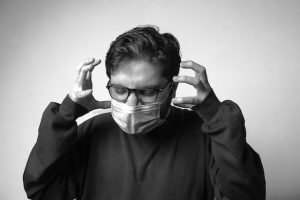
Frequently Asked Questions About Self-Massage for Headaches
How often should I practice self-massage techniques for headaches?
Aim to set aside 5-10 minutes daily for self massage. Consistency is vital in reducing muscle tension, improving circulation and managing headaches holistically over the long term. Brief sessions every day or every other day work better than infrequent longer sessions.
When during the day is best time for self massage for headaches?
Practice self-massage at any point headaches tend to occur to relieve pain. Upon waking also prime time as overnight muscle tension accumulation contributes to morning headaches for many people. Right before bed allows relaxation to enable restful sleep. Determine your daily patterns.
Will self-massage therapy cure my headaches?
For many types of headaches, especially tension and cervicogenic headaches stemming from trigger points and muscular issues, regular self massage can essentially eliminate occurrences. For other forms like migraines, it may reduce frequency and intensity. Depend on factors like type, root cause, and technique effectiveness. Consult doctor to assess if other treatment is needed.
How much pressure should I use in self-massage for headaches?
Apply pressure just to point of mild discomfort or pain, backing off if severe pain. Pain scale should reduce by at least 50% post massage. Use firm pressure without overdoing it. Start gently then increase pressure while gauging body response and feedback. Let pain and tension release cues guide ideal pressure.
Can I massage too often or too hard during self-massage therapy?
Yes, overdoing self massage can cause next day muscle soreness or pain which can aggravate headaches. Start gently focusing on relaxation. Establish minimum effective dose through consistence of light sessions. Increase pressure and duration gradually as warranted by response. Monitor if headaches worsen next 24 hours after therapy session to identify overdoing therapies. Adjust accordingly.
Is headache self-massage safe? Are there risks?
When performed correctly using appropriate pressure and technique, headache self-massage carries very minimal risks. As with any therapeutic intervention, individuals with medical conditions, recent surgery or injuries, open wounds, blood clots or nerve conditions should first consult medical provider to see if massage is indicated or any precautions needed for safe practice. Otherwise gently self massage presents little downside. Monitor body’s response.
Will self-massage provide immediate headache relief during a painful migraine attack?
Results vary based on headache type, severity and technique effectiveness. Headache relief constitutes reduction in pain, tension or duration. For migraines, massage during attacks may slightly reduce pain but full relief unlikely without medications. Success more likely with tension or cervicogenic headaches by addressing muscular trigger. Realistic expectations are key.
What if self-massage does not relieve my headache pain?
Response varies individually based on proper technique, consistency, type of headache and root causes like trauma, neurological conditions, or other medical issues. If practicing appropriate methods regularly does not provide tangible pain reduction or reduced headache frequency, consult a doctor or massage therapist for evaluation and potential complementary therapies. Do not solely rely on self-massage in absence of clinical improvement.
Why consult a doctor if my headaches continue despite using self-massage therapy techniques for headaches?
While extremely beneficial, self-massage only represents one facet of integrative headache care. If headaches worsen or fail to improve with conservative self-massage efforts first line, visiting a doctor allows proper diagnosis including potential red flag evaluation, medication options, diagnostic testing referrals (like MRI or CT scans of head and neck), or specialty therapy referrals (massage therapy, physiotherapy, psychology etc) to determine root cause and customize complementary multi-modal treatment plans based on clinical findings. Do not solely self treat without physician guidance if no improvement.
Following manual therapy basics and mastering these self-massage techniques equips individuals with valuable holistic headache relief skills easily integrated into regular self care routines. Refer to attached step-by-step self massage guides to begin controlling headaches through your own healing hands.
Read Next: Should You Eat Before a Massage?

